
Anthidiini is a tribe of insects in the family Megachilidae. There are at least 40 genera and 840 described species in Anthidiini.
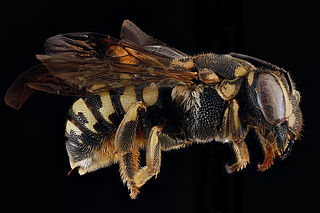
Dianthidium simile is a species of leafcutter, mason, and resin bees in the family Megachilidae. It is found in North America.

Dianthidium is a genus of leafcutter, mason, and resin bees in the family Megachilidae. There are at least 20 described species in Dianthidium.
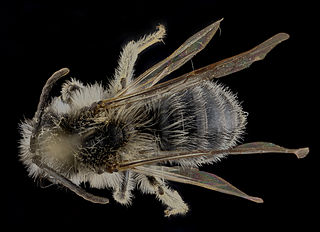
The cold miner bee is a species of miner bee in the family Andrenidae. Another common name for this species is the frigid miner. It is found in North America.
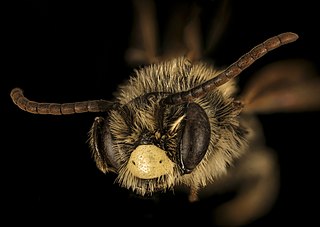
The short-tongued miner bee is a species of miner bee in the family Andrenidae. It is found in North America.
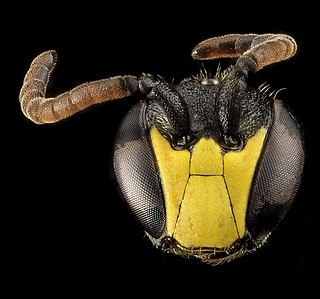
Hylaeus modestus, known generally as the modest masked bee or yellow-faced bee, is a species of hymenopteran in the family Colletidae. It is found in North America.

Diadasia diminuta, the globe mallow bee, is a species of chimney bee in the family Apidae. It is found in Central America and North America.
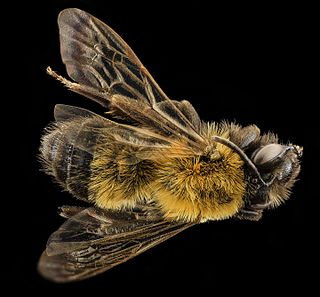
The Milwaukee miner bee is a species of miner bee in the family Andrenidae. Another common name for this species is the Milwaukee andrena. It is found in North America.
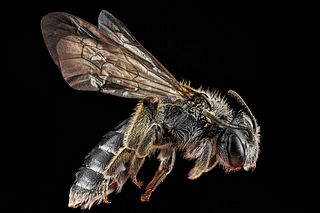
The Virginia miner bee is a species of miner bee in the family Andrenidae. Another common name for this species is the Virginia andrena. It is found in North America.

The dotted miner bee is a species of miner bee in the family Andrenidae. Another common name for this species is Cresson's andrena. It is found in North America.
The Canada miner bee is a species of miner bee in the family Andrenidae. Another common name for this species is the Canada andrena. It is found in North America.

Xeralictus is a genus of sweat bees in the family Halictidae. There are at least three described species in Xeralictus.
The Sigmund's miner bee is a species of miner bee in the family Andrenidae. Another common name for this species is the Sigmund's andrena. It is found in North America.

The two-spotted miner bee is a species of miner bee in the family Andrenidae. It is found in Central America and North America.
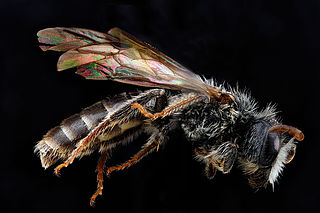
The fragile miner bee is a species of miner bee in the family Andrenidae. Another common name for the species is the fragile dogwood andrena. It is found in North America.
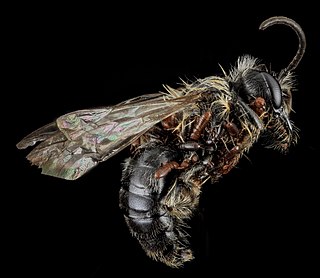
The Carlinville miner bee is a species of miner bee in the family Andrenidae. Another common name for this species is Carlin's miner. It is found in North America.

Paranomada is a genus of cuckoo bees in the family Apidae. There are at least three described species in Paranomada.
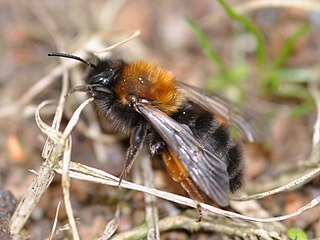
The Clark's miner bee is a species of miner bee in the family Andrenidae. Other common names include Clark's andrena and Clarke's mining bee. It is found in Europe & Northern Asia and North America.
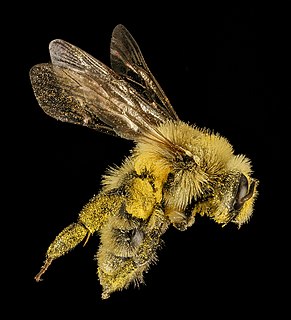
The hairy-belted miner bee is a species of miner bee in the family Andrenidae. Another common name for this species is the hairy-banded andrena. It is found in North America.

Dianthidium curvatum is a species of bee in the family Megachilidae. It is found in North America.

















